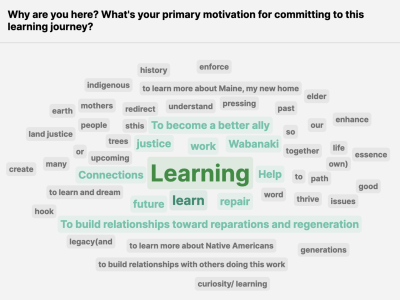Welcome to Changing Legacies, the First Light Learning Journey for Board Members! We held our first Changing Legacies cohort in November 2022 and this page holds the resources and highlights from that course.
Reading List
As you prepare for each Changing Legacies session, please set aside an hour to review the readings, podcasts, maps, and other resources in this document. We’ll update course participants with materials two weeks before each session. Each session includes a foundational set of resources, which should require no more than an hour to explore. We also offer a “deep dive” for each session if you have more time and interest to delve further into this topics. These resources are all publicly available. Please reach out to us with any questions or issues around accessing resources.
Download the Reading List.
Highlights From the Course
Below are a few highlights from the discussions and resources we shared throughout the course that we want to share publicly.
Questions and responses from Session 1:




Questions from Session 2:
- How do we change and influence our fellow board members?
- How do we regain trust with Wabanaki people?
- What is the Ask of us?
- What does success look like?
Videos and animations from Session 3:
From eji.org "EJI Director Bryan Stevenson explains how America must be willing to honestly confront our history of racial injustice to create a more just and equitable future."
A Conversation With Native Americans on Race By Michèle Stephenson and Brian Young through the NY Times Conversations on Race series of Opinion Documentaries.

Map showing the United States's constriction of Indigenous lands on Turtle Island from 1774-1930, made by Ranjani Chakraborty.

Map of conserved land gain over time from 1869-2020, made by Mapster.
